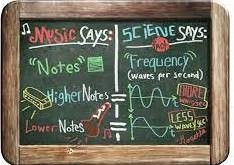Music, Rhythm, and Science: A Harmonious Interplay
School Admin
Music, Rhythm, and Science: A Harmonious Interplay
The connection between music, rhythm, and science is a profound testament to the intricate harmony that exists between seemingly disparate disciplines. Music, with its rhythmic patterns and sonic expressions, is not merely an art form; it is deeply intertwined with the principles of science, creating a symphony of understanding that resonates across both realms.
At its core, music is a manifestation of rhythm—a structured arrangement of sounds that captivates our senses and emotions. This rhythm finds its origin in the mathematical underpinnings of sound waves and frequencies. Science elucidates how these vibrations produce distinct pitches, harmonies and timbres, shaping the diverse palette that musicians utilize to create their compositions.
The science of acoustics delves into the propagation of sound waves and how they interact with various mediums. This knowledge guides instrument design and sound engineering, enabling the creation of instruments that produce specific frequencies and timbral qualities. Similarly, the concept of resonance, a fundamental principle in both music and science, elucidates how certain frequencies can amplify others—a phenomenon used both in musical instruments and scientific instruments like MRI machines.
Furthermore, rhythm—the heartbeat of music—is not just an artistic element but is also rooted in biological and neurological processes. Our bodies respond to rhythm, reflecting the entrainment of brainwaves and heartbeats to musical patterns. This synchronization underscores the intricate interplay between music, rhythm and human physiology, leading to therapeutic applications in fields like music therapy.
In the digital age, science has facilitated the exploration of new frontiers in music production, with technologies like digital audio workstations and synthesizers relying on algorithms and waveforms to generate novel sounds. This fusion of technology, music and science has led to the creation of entire genres, reshaping musical landscapes.
In essence, music is a living testament to the harmony between science and art. Its rhythms and melodies are manifestations of scientific principles—of frequencies, vibrations and neurological responses. This interplay enriches our appreciation of both disciplines, highlighting the beauty that emerges when creativity and logic intertwine.
Vidisha Tripathi
Class IX
